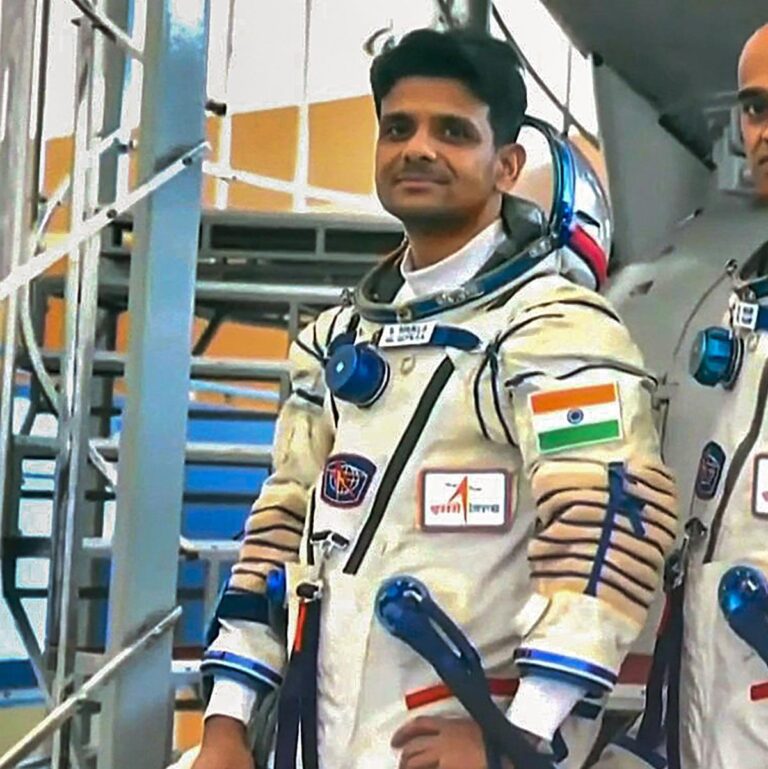Astronaut Shubhanshu Shukla has returned to India, marking a significant milestone in the nation’s growing presence in space exploration. Celebrated as ‘a moment of pride’ by officials and citizens alike, Shukla’s homecoming highlights India’s advancing capabilities in the global space arena. His successful mission not only underscores the country’s technological progress but also inspires a new generation of scientists and enthusiasts eager to contribute to India’s space ambitions.
Shubhanshu Shukla’s Historic Space Journey Inspires New Generations of Indian Scientists
The triumphant return of Shubhanshu Shukla marks a landmark achievement in India’s burgeoning space exploration narrative. His successful mission aboard the international space station not only showcases the country’s advancing technological prowess but also ignites a fresh wave of enthusiasm among young scientists and engineers across India. Shukla’s journey has become a beacon of hope, emphasizing the potential that lies within the Indian scientific community to contribute meaningfully on a global platform.
Among the numerous inspiring facets of his space voyage, the following stand out as key motivators for aspiring talents:
- International Collaboration: Demonstrated India’s capabilities in working alongside global space agencies.
- Technological Innovation: Pioneered use of indigenous technology for critical mission components.
- Educational Impact: Sparked an upsurge in STEM engagement among students nationwide.
| Mission Highlight | Significance |
|---|---|
| First Indian-led experiment in microgravity | Validated novel scientific principles |
| Duration: 21 days in orbit | Set record for Indian astronaut endurance |
| Collaboration with ISRO and NASA | Enhanced international space cooperation |
Challenges Overcome During Mission Shed Light on India’s Growing Space Capabilities
The recent mission led by astronaut Shubhanshu Shukla marked a groundbreaking achievement in India’s space journey, highlighting the resilience and ingenuity of its scientific community. Facing numerous technical hurdles, from complex onboard systems integration to navigating unpredictable space weather, the team demonstrated exceptional problem-solving capabilities. Key challenges included:
- Overcoming telecommunication delays during critical operations
- Ensuring life-support system stability amidst fluctuating external conditions
- Precision landing of the spacecraft under adverse atmospheric conditions
A closer look at the mission’s success factors reveals the robustness of India’s increasing space expertise. The collaboration between ISRO and international partners reflected a blend of advanced technology and strategic planning, accelerating India’s position as a serious contender in global space exploration. The following table summarizes the major technical milestones achieved during the mission:
| Milestone | Description | Impact |
|---|---|---|
| Autonomous Navigation | Real-time course correction technology | Enhanced mission precision and safety |
| Extended Life-Support | Optimized resource recycling system | Longer mission duration capabilities |
| Soft-landing Gadgets | Advanced cushioning and stability mechanisms | Minimized landing impact, ensuring crew safety |
Recommendations for Strengthening India’s Astronaut Training and Space Research Programs
To propel India’s space aspirations higher, a multi-faceted approach to astronaut training and research investment is urgent. Enhancing collaboration with leading global space agencies can accelerate knowledge transfer and provide trainees with exposure to diverse mission scenarios. Introducing specialized training simulators that replicate varied orbital and interplanetary environments will better prepare astronauts for the rigors of space missions. Additionally, integrating advanced physical and psychological conditioning programs tailored for long-duration spaceflights should become a core part of the curriculum.
Bolstering India’s space research demands sustained funding and fostering an ecosystem that encourages innovation at grassroots levels. Establishing more multi-disciplinary research hubs and public-private partnerships will stimulate the development of cutting-edge aerospace technologies. The following table highlights key areas with their recommended focus to reinforce India’s position as a competitive spacefaring nation:
| Focus Area | Recommended Action | Expected Outcome | ||||||||||
|---|---|---|---|---|---|---|---|---|---|---|---|---|
| Astronaut Health & Training | High-fidelity simulations, psychological support | Optimize mission preparedness and resilience | ||||||||||
| Research Infrastructure | Expand interdisciplinary labs, increase grants | Boost innovation and tech development | ||||||||||
| International Collaboration | Joint missions, training exchanges |
To propel India’s space aspirations higher, a multi-faceted approach to astronaut training and research investment is urgent. Enhancing collaboration with leading global space agencies can accelerate knowledge transfer and provide trainees with exposure to diverse mission scenarios. Introducing specialized training simulators that replicate varied orbital and interplanetary environments will better prepare astronauts for the rigors of space missions. Additionally, integrating advanced physical and psychological conditioning programs tailored for long-duration spaceflights should become a core part of the curriculum. Bolstering India’s space research demands sustained funding and fostering an ecosystem that encourages innovation at grassroots levels. Establishing more multi-disciplinary research hubs and public-private partnerships will stimulate the development of cutting-edge aerospace technologies. The following table highlights key areas with their recommended focus to reinforce India’s position as a competitive spacefaring nation:
|




